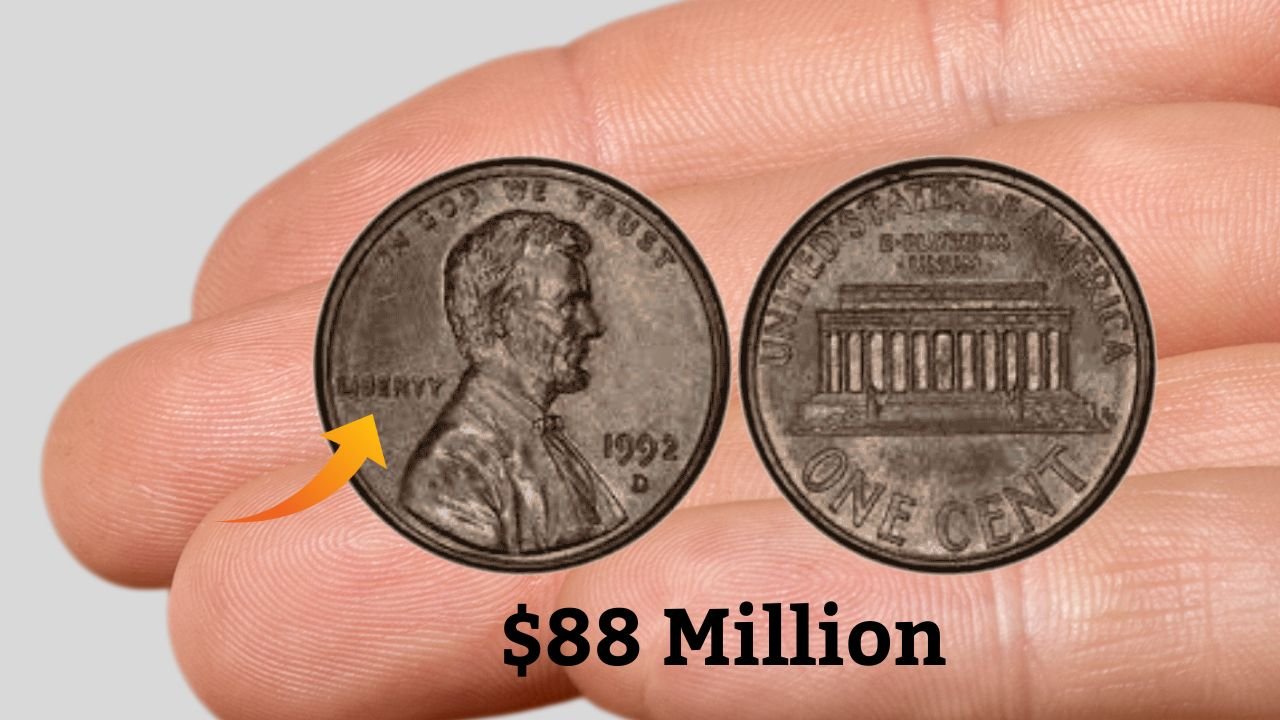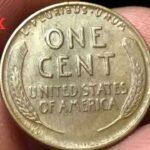The Lincoln Wheat Penny Valued at $88 Million, Still in Circulation? Here’s How to Spot!
A Rare Find That’s Making Headlines
Imagine stumbling upon a penny so valuable that it could change your life overnight. That’s exactly what’s causing waves in the numismatic world – a Lincoln Wheat Penny reportedly valued at $88 million, still possibly floating in general circulation. While it might sound like folklore to the average person, for coin collectors and curious treasure hunters, this is a tantalizing reality. Let’s dive into the incredible story behind this penny and what you need to know if you dream of discovering one.
Looking Back: The Penny’s Humble Origins
The Lincoln Wheat Penny, introduced in 1909 to commemorate Abraham Lincoln’s 100th birthday, was America’s first circulating coin to feature a real person. Minted until 1958, this iconic coin bears wheat stalks on the reverse and Lincoln’s profile on the front. Originally just a piece of copper worth one cent, some rare versions have soared in value due to minting errors, limited production years, or unique metal compositions. The cultural and historical significance of this penny adds yet another layer to its growing mystique.
Why Some Pennies Command Millions
So what turns a common-looking coin into an $88 million marvel? It’s all about rarity, condition, and error. Specific Lincoln Wheat Pennies have:
- Misstruck dies
- Off-metal errors
- Low mintage figures
- Pristine “Mint State” conditions
- Unique historical significance
One rumored penny is said to be a 1943 Lincoln Wheat Penny mistakenly struck in bronze, instead of the standard steel. Its rarity, combined with historical context and collector demand, is what catapults it to such astronomical value. Owning one is like holding a piece of history – and fortune – in your palm.
Spotting the Jackpot: Features of the $88 Million Wheat Penny
If you’re serious about coin hunting, you need to know the signs of a valuable Lincoln Wheat Penny. Here’s what to look for:
- Mint Year: Especially rare years include 1909-S VDB, 1914-D, 1922 No D, and 1943 Bronze.
- Material: In 1943, pennies were made of steel due to wartime copper shortages. If you find a 1943 penny that sticks to a magnet, it’s steel. If not – it might be bronze and ultra-rare.
- Mint Mark: Coins from San Francisco (S) or Denver (D) can have higher value depending on year.
- Error Types: Double-die obverse, repunched mint marks, and off-center strikes are signs of value.
- Condition: Coins graded MS65 or higher fetch exponentially more at auctions.
Before rushing to the bank with your penny stash, take a moment to inspect them under a magnifying glass – your next find could be monumental.
How This Penny Affects Coin Collectors Worldwide
The buzz around this $88 million coin has ignited a new wave of enthusiasm in the coin collecting world. Hobbyists and professional numismatists alike are now checking their collections more closely. Pawnshops, flea markets, estate sales – all are becoming hotspots for treasure hunters. Not only does this raise the profile of coin collecting, but it also increases the market value of related coins.
The possibility that such a coin is still circulating among us turns everyday transactions into thrilling opportunities.
Getting It Verified – The Role of Experts
Finding what you believe to be a rare Lincoln Wheat Penny is only half the journey. Professional authentication and grading are essential steps. Reputable services like PCGS or NGC evaluate coins for:
- Authenticity
- Grade (condition)
- Rarity and demand
- Market value
Without proper certification, even a genuine rare coin might not achieve its full market potential. Don’t risk undervaluing your find—get it professionally checked.
Storing a Potential Multi-Million Dollar Coin
If you’re lucky enough to own a high-value penny, preservation becomes critical. Here’s how to care for it:
- Never clean the coin, as this can destroy its natural patina and reduce value.
- Store in acid-free coin holders or capsules.
- Keep it in a cool, dry environment to prevent corrosion.
- Limit handling – use cotton gloves if necessary.
Your coin isn’t just a collectible—it’s a financial asset and a piece of history.
Some of the Most Valuable Lincoln Wheat Pennies Ever Found
| Coin | Year | Mint Mark | Estimated Value | Notes |
| 1909-S VDB | 1909 | S | $700 – $50,000+ | First Lincoln cent, low mintage |
| 1914-D | 1914 | D | $200 – $30,000+ | Rarely found in high grade |
| 1922 No D | 1922 | No Mint Mark | $500 – $25,000+ | Minting error, no visible mint mark |
| 1943 Bronze Cent | 1943 | Varies | $100,000 – $2,000,000+ | Extremely rare wartime error |
| 1955 Double Die Obverse | 1955 | P | $1,000 – $20,000+ | Highly visible doubling on date/letter |
The Search is Far from Over
Despite the hype and media coverage, the legendary $88 million penny has not been officially verified or auctioned. That means it could still be out there—waiting in a drawer, an old jar, or in your pocket change. This air of mystery keeps collectors motivated and hopeful. Whether you’re a seasoned numismatist or a newbie, now is the perfect time to start checking those old pennies again.
More Than Just a Copper Coin
At the heart of it, the Lincoln Wheat Penny isn’t just about monetary value. It symbolizes history, craftsmanship, and the thrill of the hunt. For many collectors, it’s not just about profit – it’s about preserving a connection to America’s past. Finding such a penny becomes a personal story, a legacy to pass down through generations.
Final Thoughts – Could You Be Holding a Fortune?
The thought that an $88 million coin might be lying forgotten in a jar somewhere is electrifying. While the odds are slim, they’re not zero. Whether you’re cleaning out an attic or sifting through spare change, now is the time to look closer. You might just be holding the most valuable penny in the world.
Frequently Asked Questions
Q1. Is there really a Lincoln Wheat Penny worth $88 million?
Yes, there are rumors and reports, particularly regarding a rare 1943 Bronze Wheat Penny with unmatched rarity and auction value. While not officially confirmed at $88 million, extremely rare coins have fetched millions.
Q2. Where can I get my penny authenticated?
Trusted companies like PCGS (Professional Coin Grading Service) or NGC (Numismatic Guaranty Corporation) offer authentication and grading services.
Q3. How do I know if my Lincoln penny is rare?
Check the mint year, mint mark, material, and look for errors or anomalies. Rare years include 1909-S VDB, 1914-D, 1943 Bronze, and more.
Q4. Can these valuable pennies still be in circulation?
While rare, it’s possible. Some have been found in old collections, change drawers, and even pocket change.
Q5. Is coin collecting profitable?
Yes, with the right knowledge and eye for detail, coin collecting can be both a fulfilling hobby and a lucrative investment.




